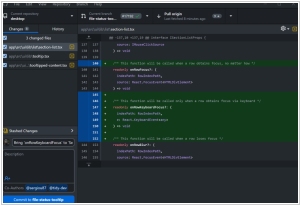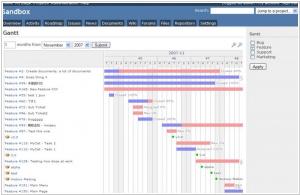GitHub vs Redmine
March 08, 2025 | Author: Michael Stromann
19★
GitHub is the best place to share code with friends, co-workers, classmates, and complete strangers. Over seven million people use GitHub to build amazing things together. Free public repositories, collaborator management, issue tracking, wikis, downloads, code review, graphs and much more…
14★
Redmine is a flexible alternative project management web application. Written using the Ruby on Rails framework, it is cross-platform and cross-database. Redmine is open source and released under the terms of the GNU General Public License v2 (GPL).
See also:
Top 10 Issue-tracking systems
Top 10 Issue-tracking systems
GitHub and Redmine, at first glance, appear to be two entirely different species of digital life, yet they share a surprising number of genetic similarities. Both exist to help humans manage projects, track issues and collaborate, usually while pretending everything is under control. They offer web-based interfaces so that people can click things, integrations so that other things can click other things and role-based permissions so that not everyone can click everything—which, let’s be honest, is probably for the best.
GitHub, hailing from the United States and launched in the surprisingly recent past of 2008, is primarily concerned with code and the peculiar creatures who write it. It revolves around Git, the version control system that allows developers to accidentally commit sensitive data and then panic. GitHub is also packed with private repositories, automation tools and a thriving ecosystem of issues that never seem to go away. The real magic lies in its ability to convince teams they are making progress, despite the ever-growing backlog of unresolved bugs.
Redmine, on the other hand, emerged from Japan in 2006, slightly older, slightly wiser and significantly less obsessed with Git. It caters to project managers and teams who prefer charts, workflows and a good old-fashioned structured approach to task tracking. Unlike GitHub, it happily manages multiple projects under one roof, allowing users to customize workflows with a dizzying number of plugins. Redmine doesn’t just track progress; it provides a deeply flexible system to ensure that every task, no matter how small, is meticulously recorded, discussed, and—if all goes well—possibly even completed someday.
See also: Top 10 Issue Trackers
GitHub, hailing from the United States and launched in the surprisingly recent past of 2008, is primarily concerned with code and the peculiar creatures who write it. It revolves around Git, the version control system that allows developers to accidentally commit sensitive data and then panic. GitHub is also packed with private repositories, automation tools and a thriving ecosystem of issues that never seem to go away. The real magic lies in its ability to convince teams they are making progress, despite the ever-growing backlog of unresolved bugs.
Redmine, on the other hand, emerged from Japan in 2006, slightly older, slightly wiser and significantly less obsessed with Git. It caters to project managers and teams who prefer charts, workflows and a good old-fashioned structured approach to task tracking. Unlike GitHub, it happily manages multiple projects under one roof, allowing users to customize workflows with a dizzying number of plugins. Redmine doesn’t just track progress; it provides a deeply flexible system to ensure that every task, no matter how small, is meticulously recorded, discussed, and—if all goes well—possibly even completed someday.
See also: Top 10 Issue Trackers





